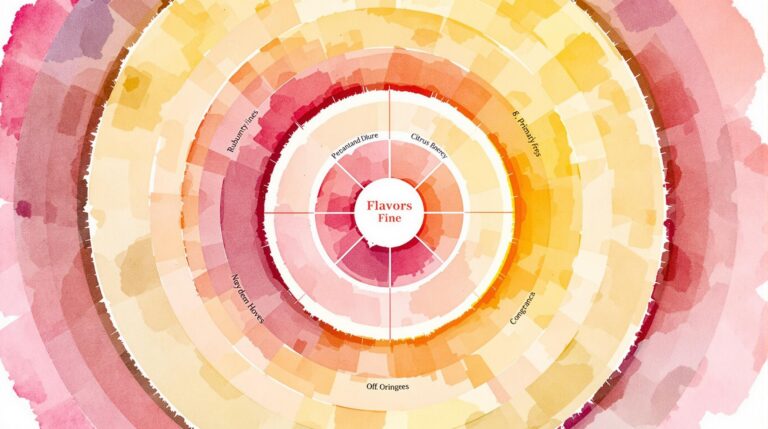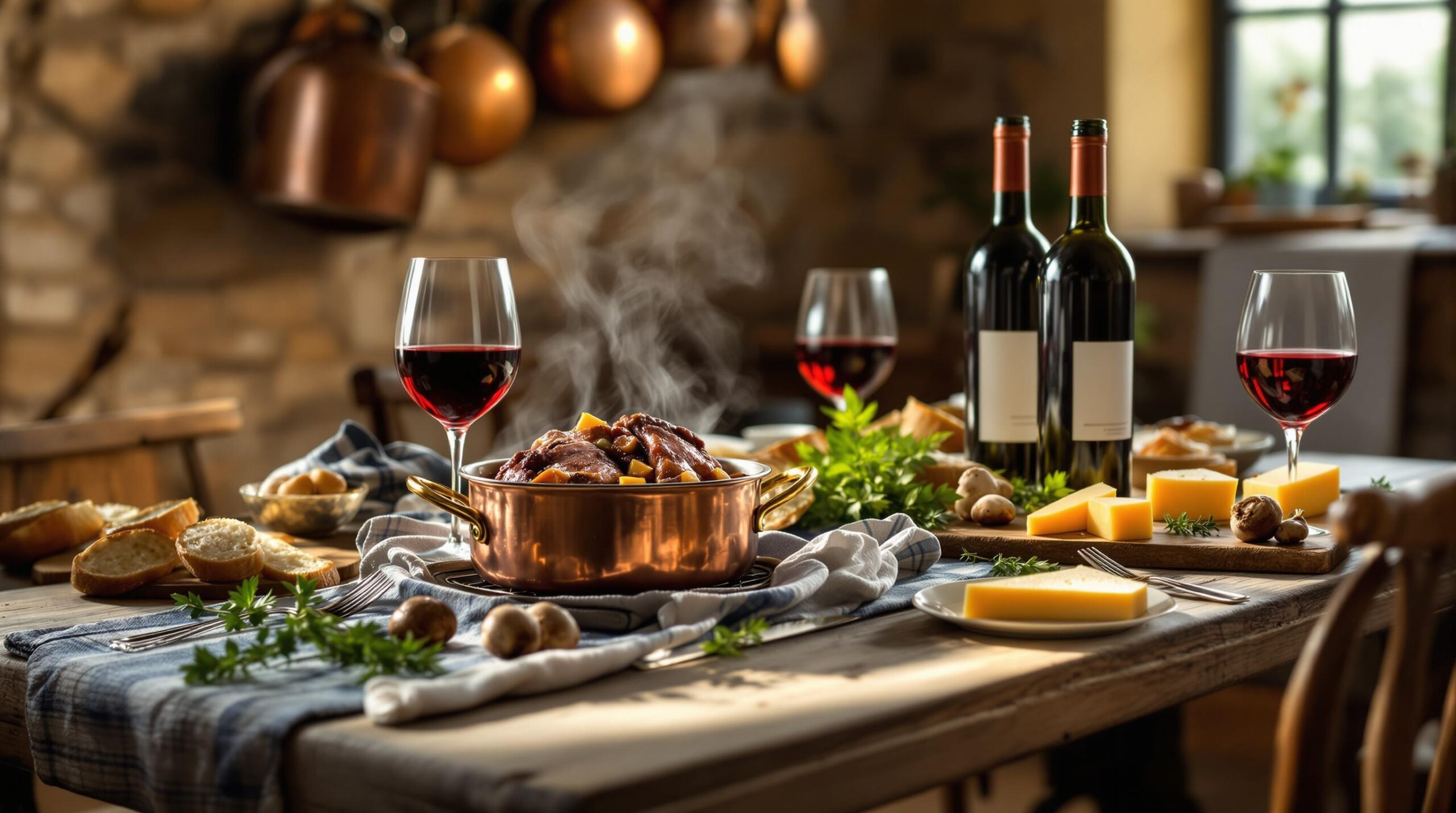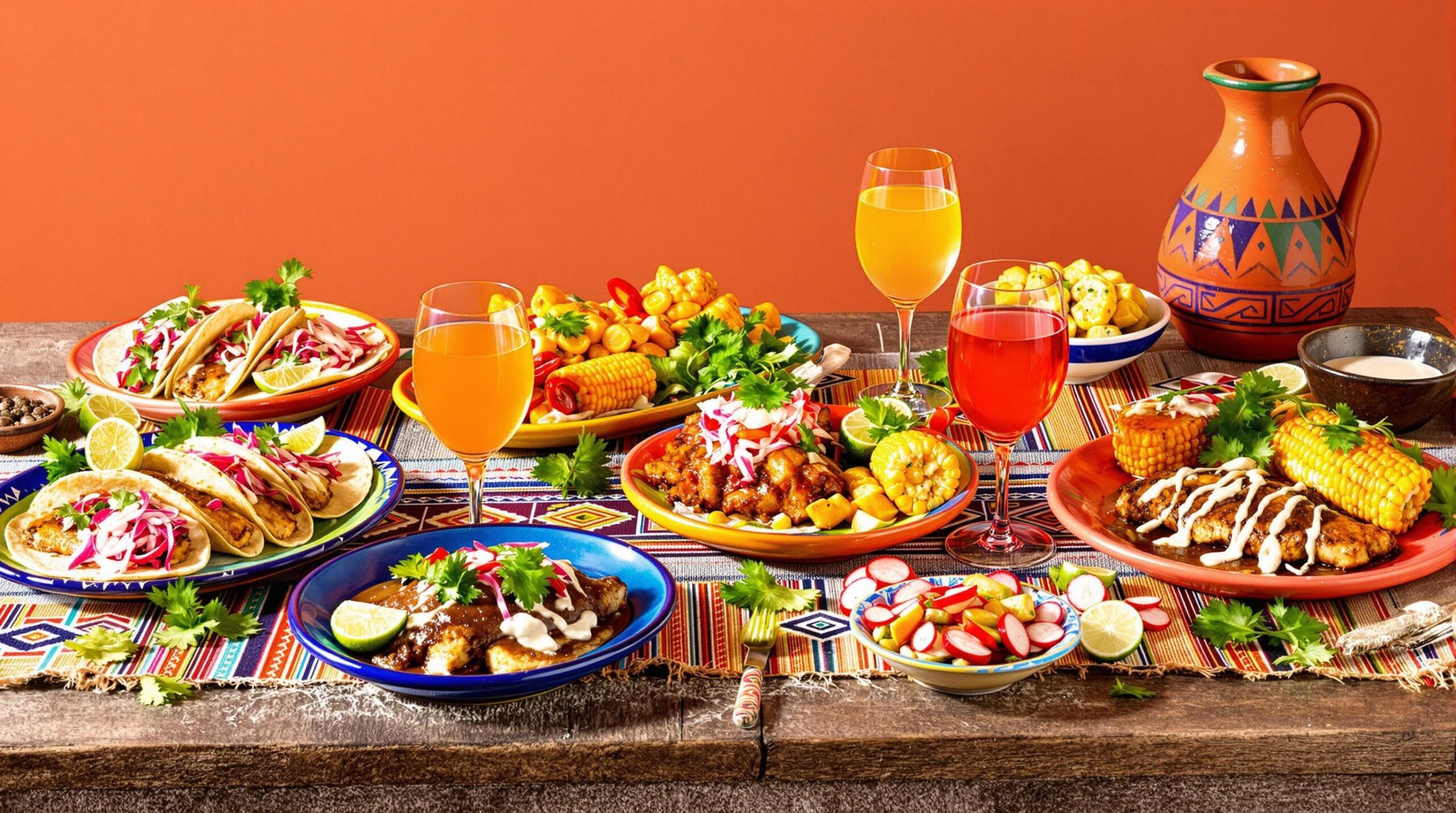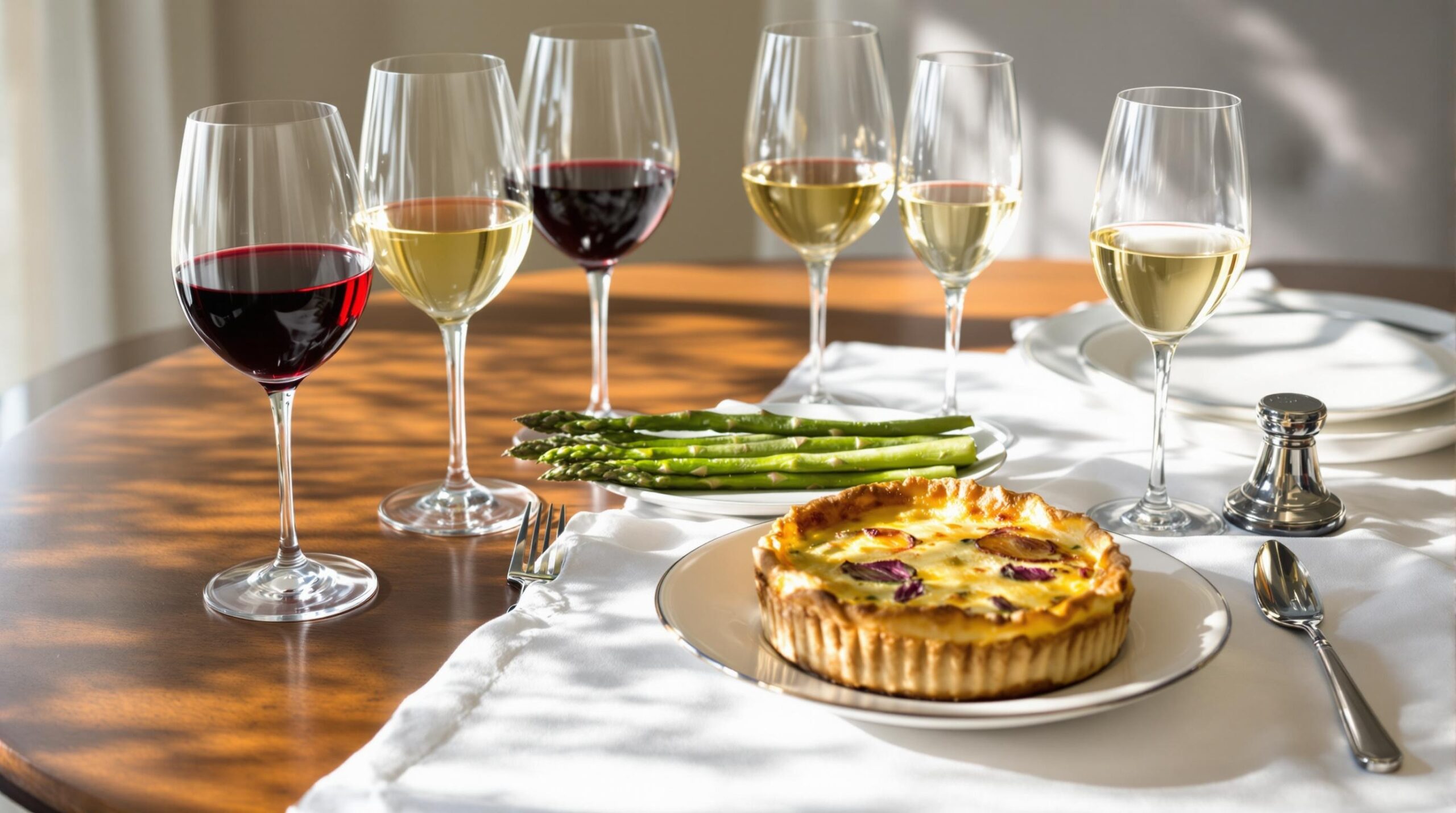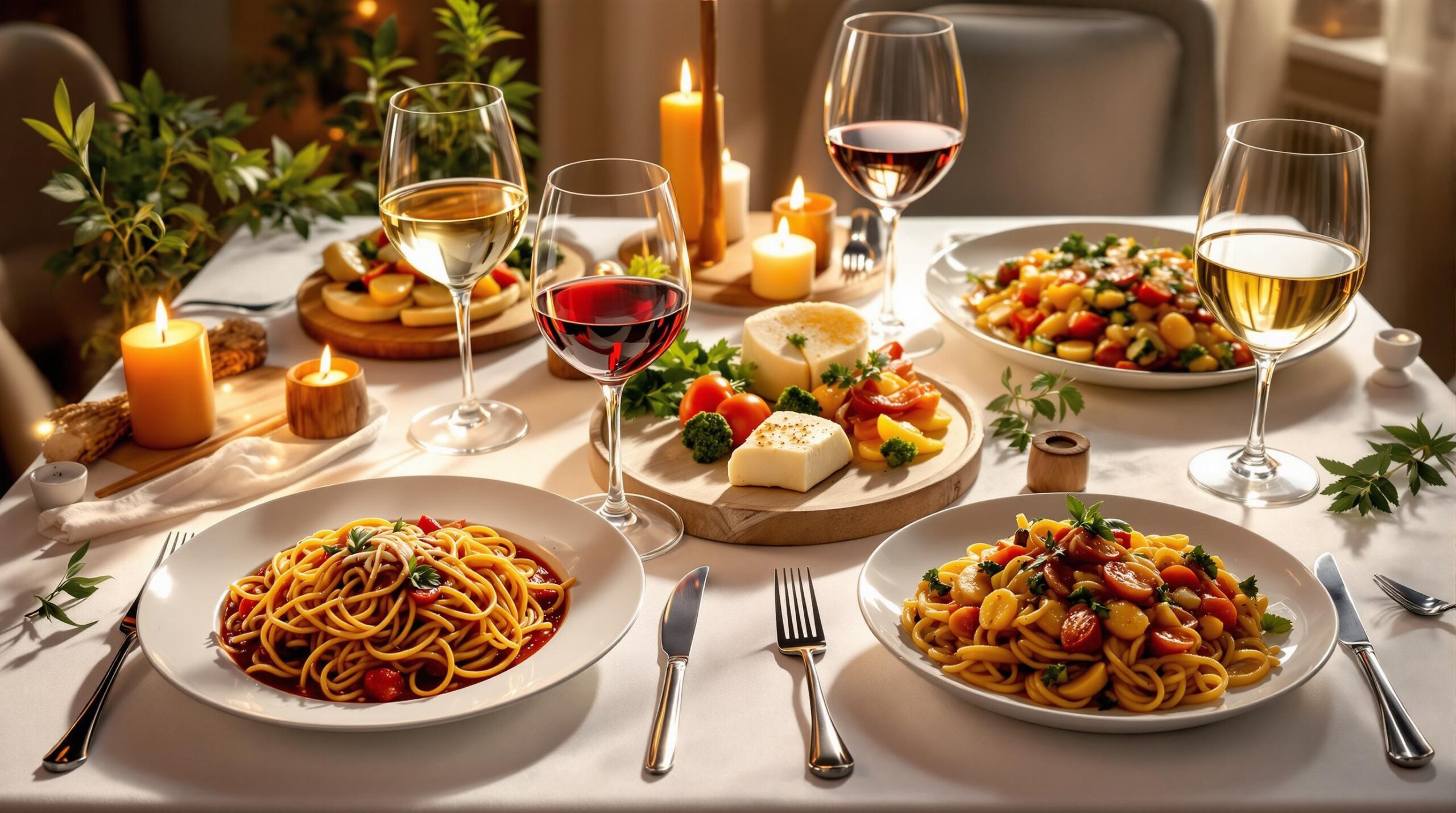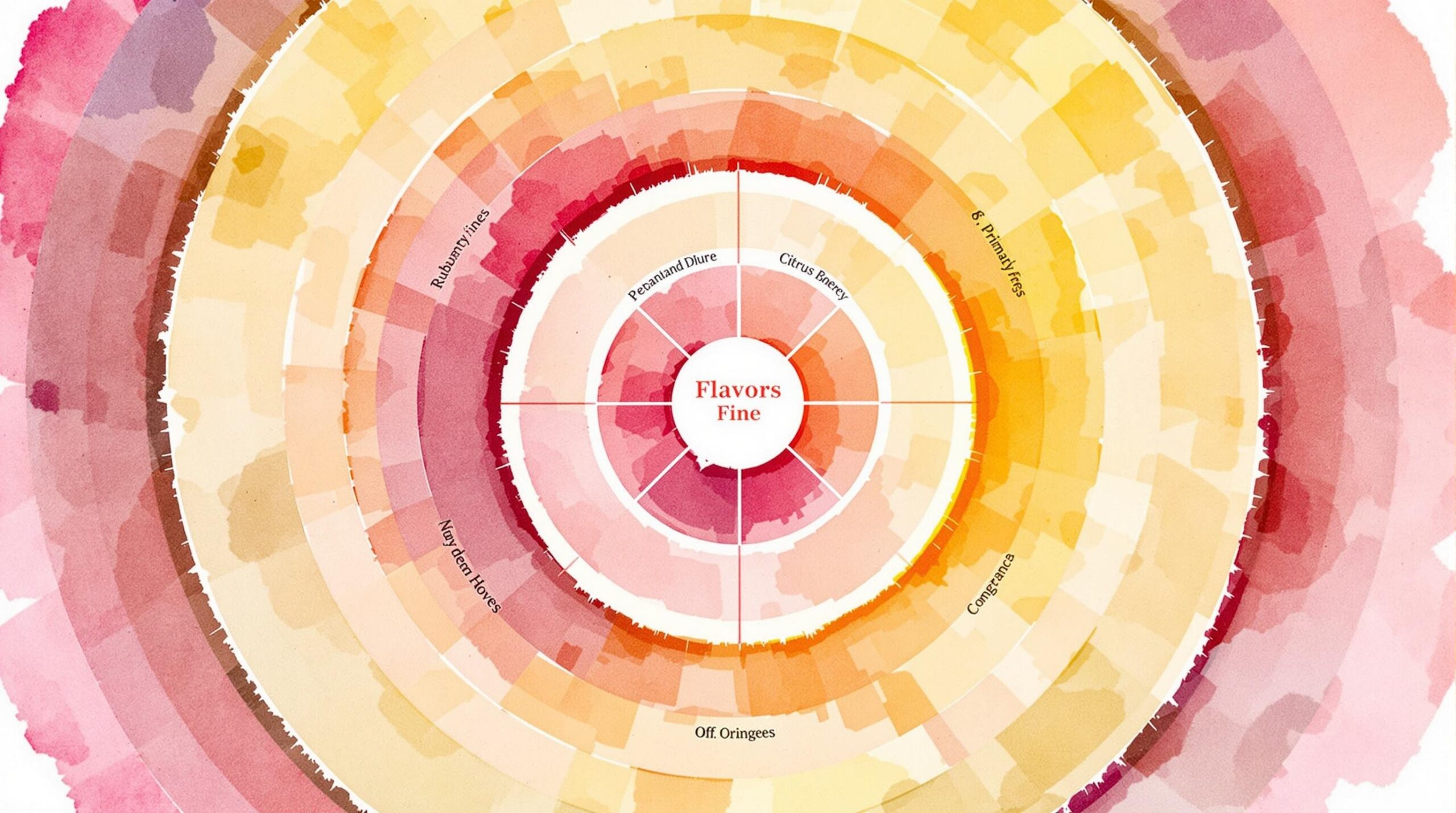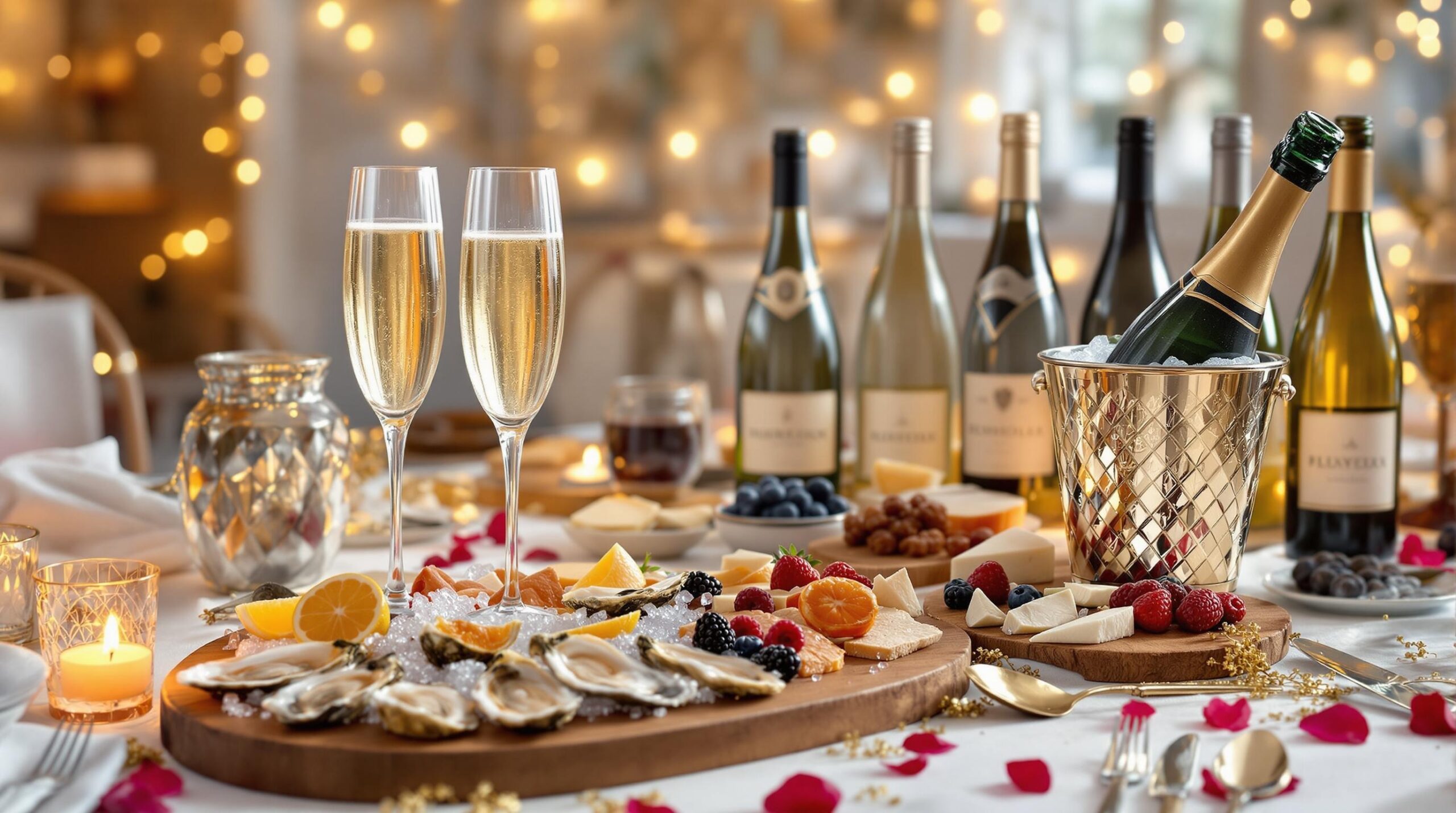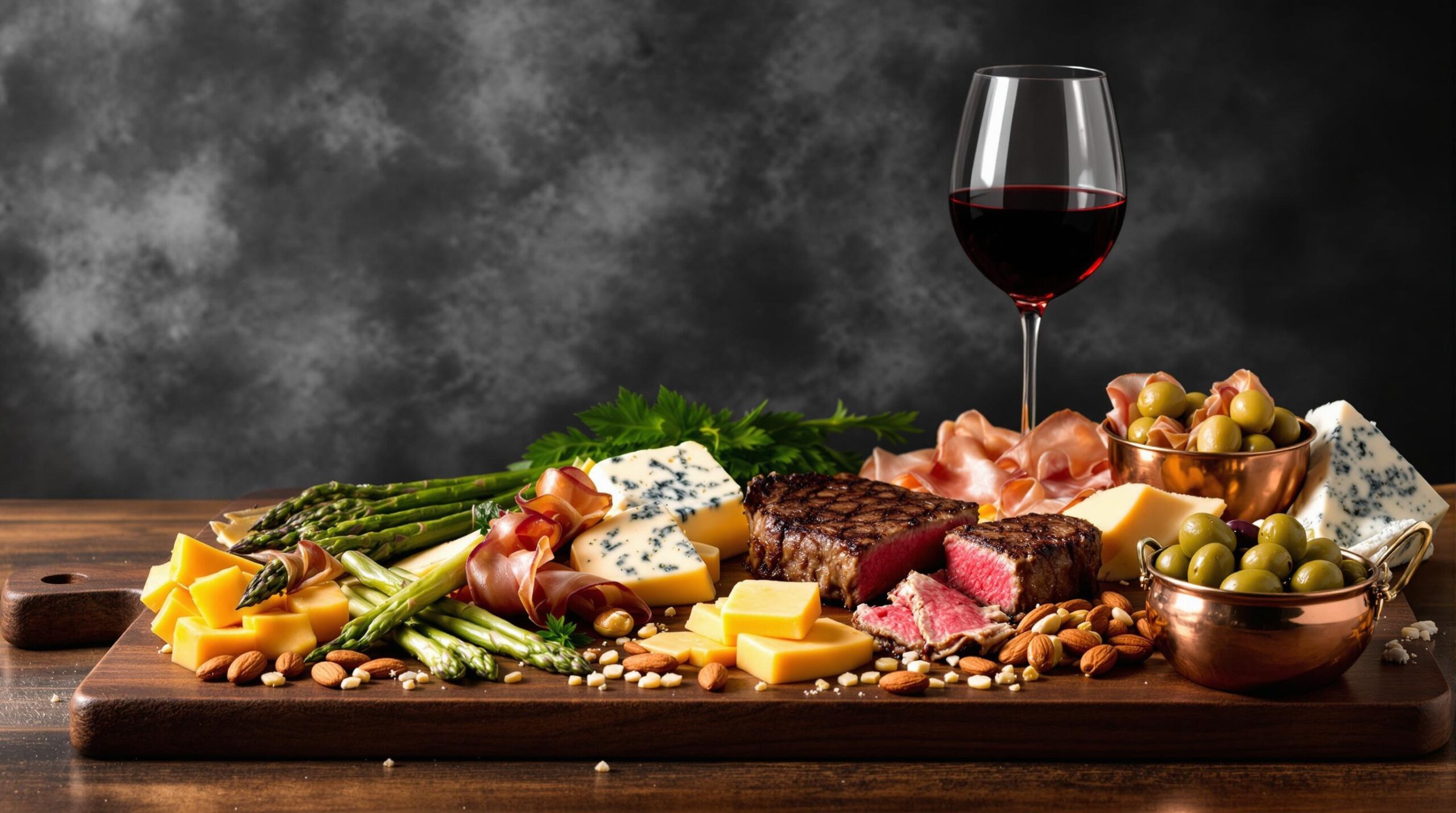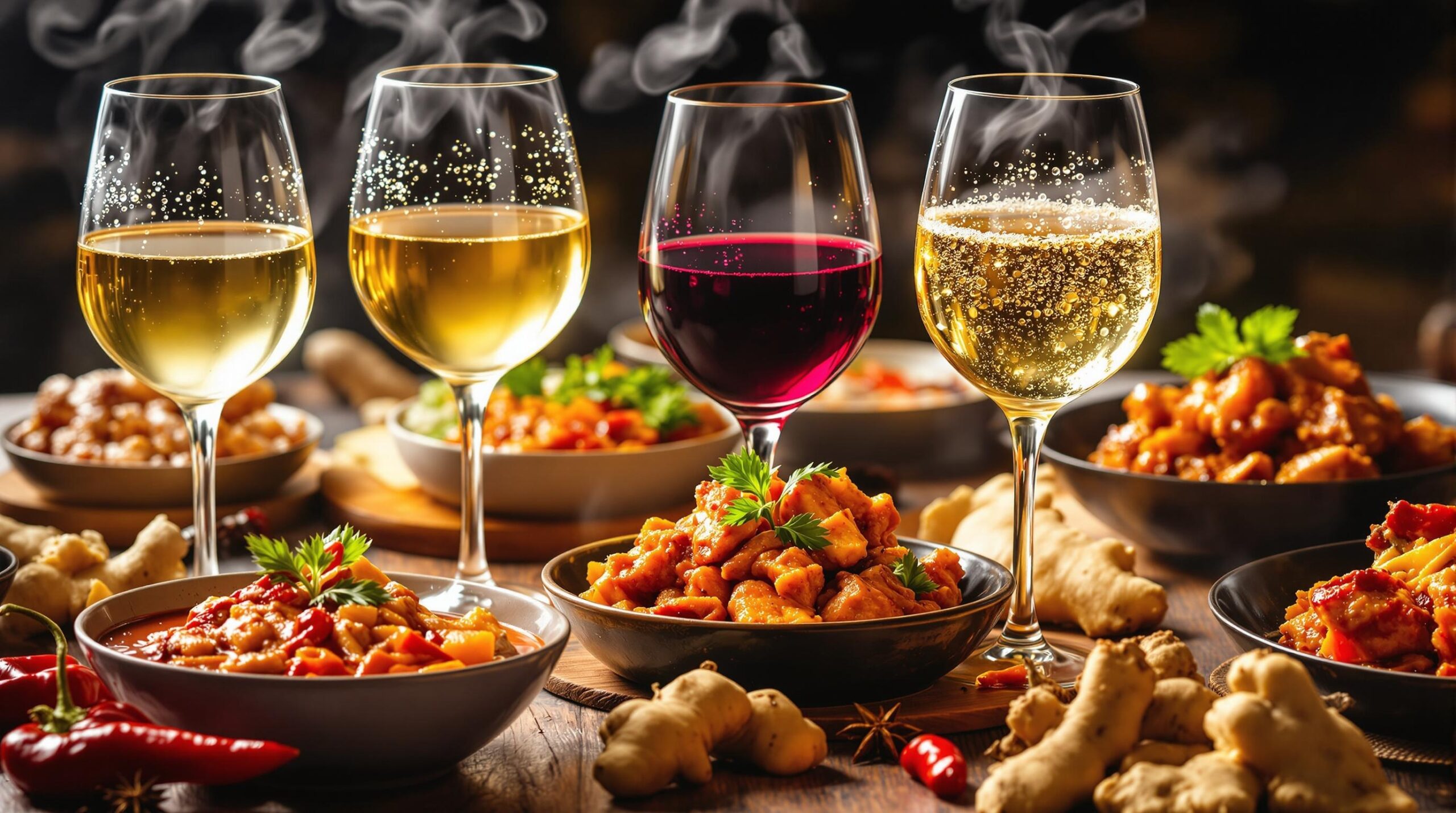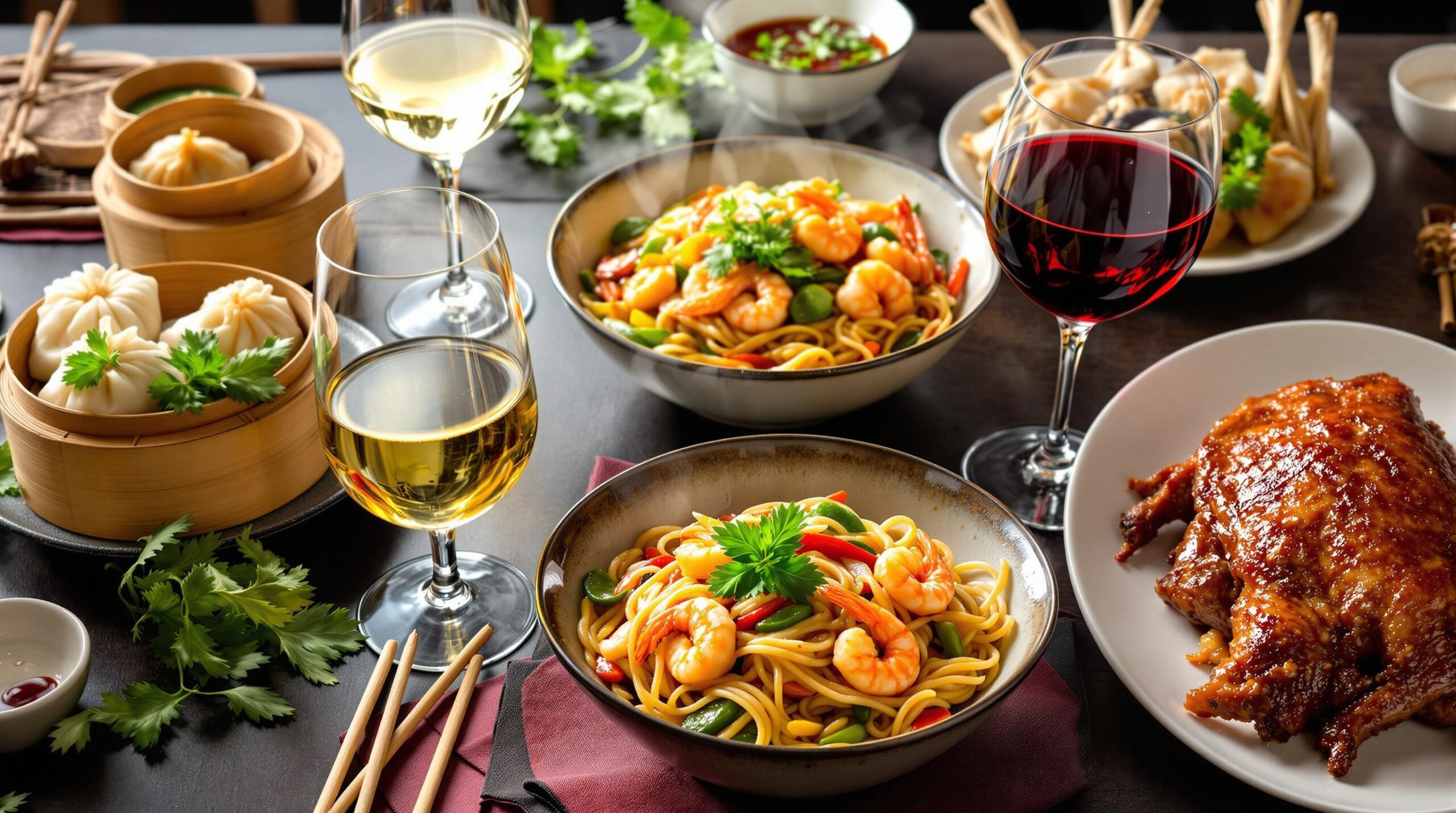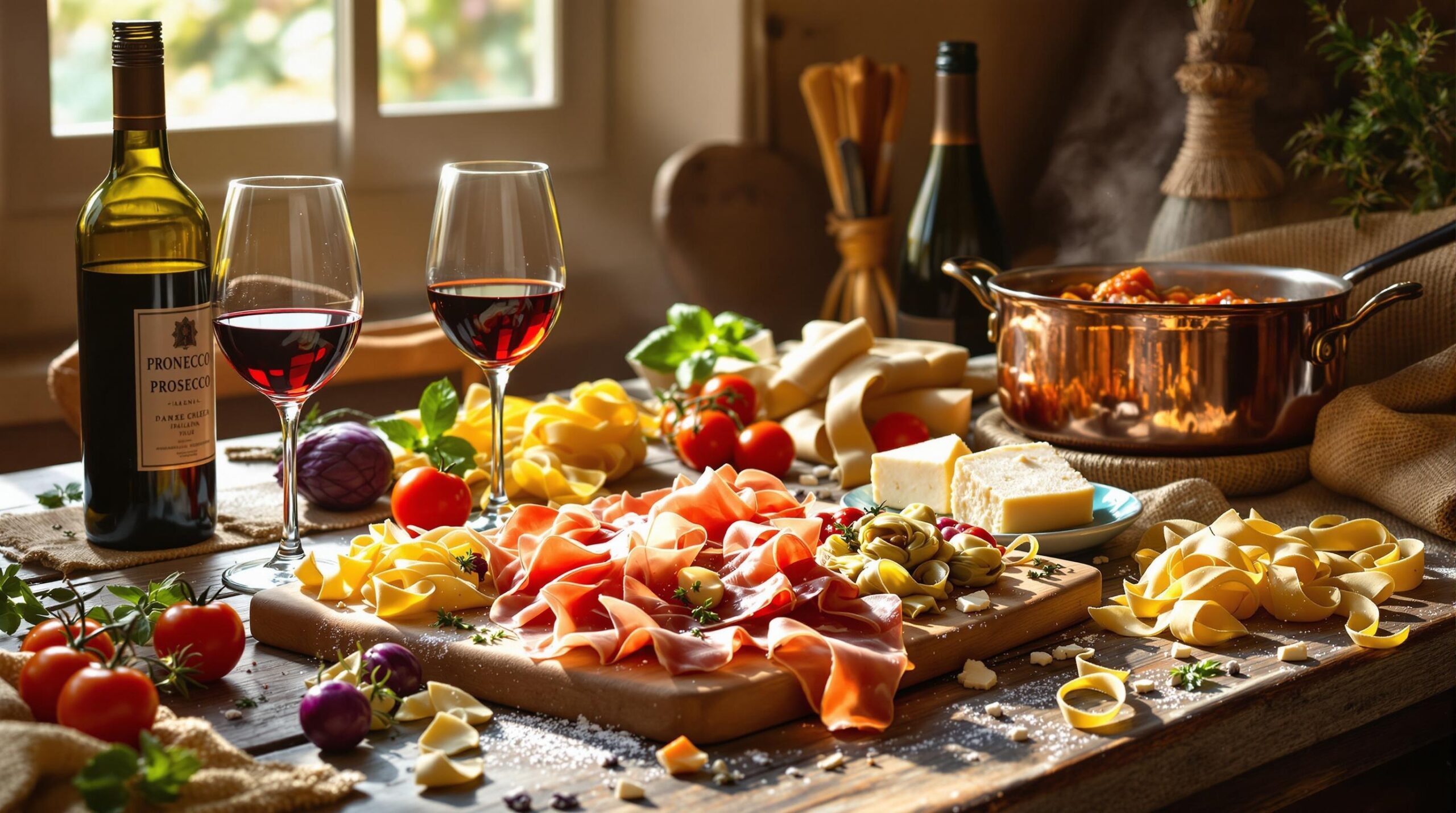A flavor wheel helps decode the complex tastes and aromas in food and wine. This quick guide breaks down how to use this practical tool to enhance your tasting experience and food pairing skills.
Basic Structure and Components
The flavor wheel organizes tastes into primary, secondary, and tertiary categories.
- Primary: Core flavors like fruity, floral, spicy
- Secondary: Subcategories like citrus, stone fruit, tropical
- Tertiary: Specific descriptors like lemon, peach, mango
How to Use a Flavor Wheel for Wine Tasting
Start from the center and work your way outward to identify specific flavors in your wine.
- Look: Observe color and clarity
- Smell: Identify broad aroma categories
- Taste: Connect flavors to specific descriptors
- Record: Note your observations for future reference
Food and Wine Pairing Applications
The flavor wheel helps identify complementary and contrasting taste elements.
| Wine Profile | Food Pairing Example |
|---|---|
| Citrus-forward whites | Seafood, light pasta |
| Berry-rich reds | Grilled meats, aged cheese |
| Mineral whites | Shellfish, fresh vegetables |
Training Your Palate
Developing wine tasting skills requires consistent practice and mindful tasting techniques.
- Compare wines side by side from same grape variety
- Take detailed tasting notes using the flavor wheel
- Join tasting groups or online communities
- Try wines from different regions and price points
Common Flavor Combinations
Understanding classic flavor pairings helps identify wine characteristics and food matches.
| Flavor Profile | Common Combinations |
|---|---|
| Red fruit & berries | Vanilla, oak, tobacco |
| Citrus & stone fruit | Honey, minerals, herbs |
| Earth & spice | Leather, mushroom, pepper |
Troubleshooting Tasting Challenges
Address common obstacles in wine tasting with practical solutions.
- Temperature: Serve wines at proper temperature for optimal flavor expression
- Glass type: Use appropriate glassware to concentrate aromas
- Palate fatigue: Cleanse with water between tastings
- Aroma identification: Keep reference samples of common scents
Building Your Tasting Vocabulary
Expand your ability to describe wines accurately and confidently.
Key Areas to Develop
- Aroma descriptors: Fruits, flowers, spices, minerals
- Texture terms: Silky, rough, smooth, grippy
- Structure words: Acid, tannin, body, finish
- Regional characteristics: Terroir-specific traits
Practice describing wines using these elements to build confidence in your tasting abilities and wine selections.
Wine and Food Flavor Wheel: Quick Guide
A flavor wheel helps identify and describe tastes and aromas in food and wine. Understanding these elements improves your pairing skills and overall dining experience.
Common Questions About Flavor Wheels
What is a flavor wheel?
A flavor wheel is a visual tool that organizes tastes, aromas, and textures into categories. It starts with broad flavors in the center (like fruity or spicy) and branches out to specific descriptions (like blackberry or cinnamon).
How do I use a flavor wheel for wine tasting?
- Start from the center and work outward
- Identify primary taste categories first
- Move to specific descriptors
- Take notes to track your observations
What are the main flavor categories?
| Category | Examples |
|---|---|
| Fruit | Berry, citrus, stone fruit |
| Earth | Forest floor, mushroom |
| Spice | Pepper, cinnamon, clove |
| Floral | Rose, violet, lavender |
How does the flavor wheel help with food pairing?
Matching complementary or contrasting flavors creates balanced pairings. For example, a peppery Syrah pairs well with spiced meats, while citrusy Sauvignon Blanc complements light seafood.
What’s the difference between taste and aroma?
Taste involves the basic sensations on your tongue (sweet, sour, salty, bitter, umami). Aroma comes from volatile compounds detected by your nose.
Tips for Better Flavor Recognition
- Practice regularly: Taste mindfully during meals
- Keep notes: Document your observations
- Compare: Taste similar wines side by side
- Use fresh ingredients: Reference real fruits and spices
Common Wine Flavor Profiles
- Cabernet Sauvignon: Black cherry, cedar, vanilla
- Chardonnay: Apple, butter, oak
- Pinot Noir: Raspberry, earth, mushroom
- Sauvignon Blanc: Grapefruit, grass, gooseberry
Tools for Better Tasting
- Proper wine glasses
- Tasting journal
- Reference materials (fresh fruits, herbs, spices)
- Temperature control for wines
Common Mistakes to Avoid
- Rushing the tasting process
- Serving wine at wrong temperatures
- Using strongly scented products while tasting
- Overlooking texture and body
Getting Started
Begin with familiar wines and foods to build confidence. Sample different varieties within the same grape to spot subtle differences.
Consider joining a tasting group or taking a basic wine course to accelerate learning. These experiences provide structured guidance and exposure to various flavors.

